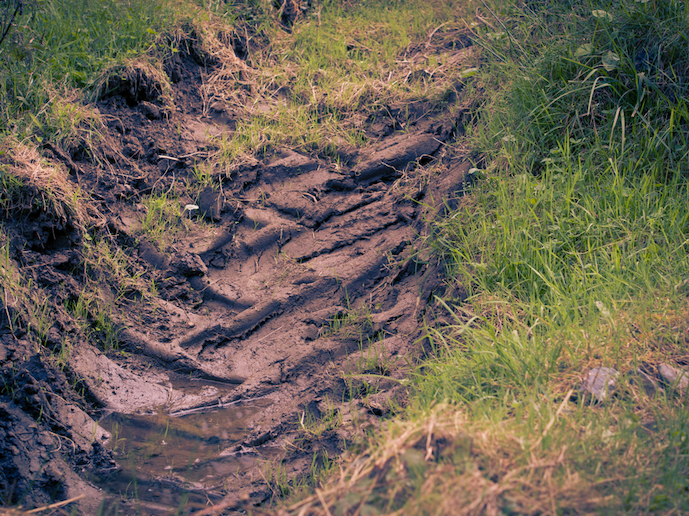Forestry vehicles with a soft touch
Climate change hasn’t exactly been sparing the forestry sector. Milder and wetter climates have weakened forest soils, to the point where traditional machines are now difficult to operate without inflicting damage. Forest administrators have had no other choice than to restrict access to machines in particularly sensitive areas, while the rationalisation of wood supply has created the need for expensive specialist machines that require high levels of production to pay off. All in all, fewer machines are expected to produce more, in a shorter time. The OnTrack Forwarder answers this challenge with a better distribution of machine load to the ground. Its fitted tracks reduce ground pressure to 50 kilopascals for a 14-tonne load, allowing the machine to keep operating on low-bearing capacity grounds long after conventional machines would have caused serious wheel rutting. “The tracks are made of reinforced rubber instead of steel, meaning that they are more gentle on tree roots, that the operators are subjected to less vibration, and that they are able to cross roads and cycle paths without damaging them,” explains Rasmus Astrup, research manager at NIBIO and coordinator of the OnTrack project. “This makes the OnTrack Forwarder particularly useful in forests with much public access.” The Forwarder is not only gentle to the ground: It’s also smart. An integrated set of laser scanners – the OnTrack Monitor, which can be retrofitted to any other forest machine – evaluates the soil and scans the ground surface ahead and behind, all this while a central control unit calculates the depth of any wheel rutting the machine might have caused. The information is then provided to the operator and, thanks to a GPS and online router, it can also be transmitted to the forest manager and mapped on a ground plan of the harvesting site. As Astrup explains, “The maps indicate where severe rutting has occurred, provide information on the state of the site after operation, and can be used as a basis for follow-up studies. These can focus on the growth rates of young trees planted in wheel paths compared to those outside these paths, or define how other management tools such as depth-to-water maps match the actual rutting.” Both the OnTrack Forwarder and Monitor were exposed to rugged field testing during the second project year. Selected forest contractors were given free rein to test them in normal operations for at least one month in Germany, Finland, Latvia, Norway and Sweden and their feedback was used in reengineering and improving the products. “Stakeholder reactions have generally been very positive,” Astrup enthuses. “Besides, we have noticed increased attention to the issues we highlighted, through articles and discussions in relevant publications, but also with the acceleration of parallel efforts to reduce ground pressure among machine, tyre, and track manufacturers.” Whilst the project is now completed, manufacturing partners Ponsse Plc and Prinoth SpA are still looking into the feasibility and timeframe of constructing a modified prototype, building on the experiences gained from field testing. Meanwhile, options for commercialising the Monitor have diversified, and include a low-cost industrial version at coarser spatial resolution (10m x 10m), a high-resolution (sub-metre) and mobile research version for field studies, and a back-pack mounted version for measuring site disturbance after harvesting operations are complete.
Keywords
OnTrack, forwarder, monitor, forestry, forest soils, preservation, damage reduction







